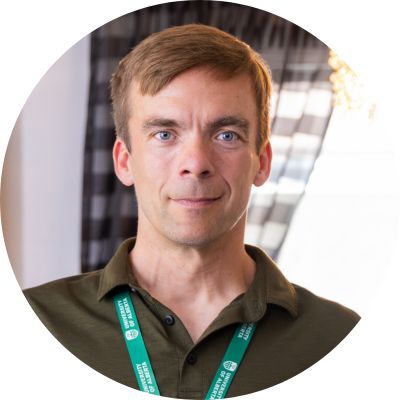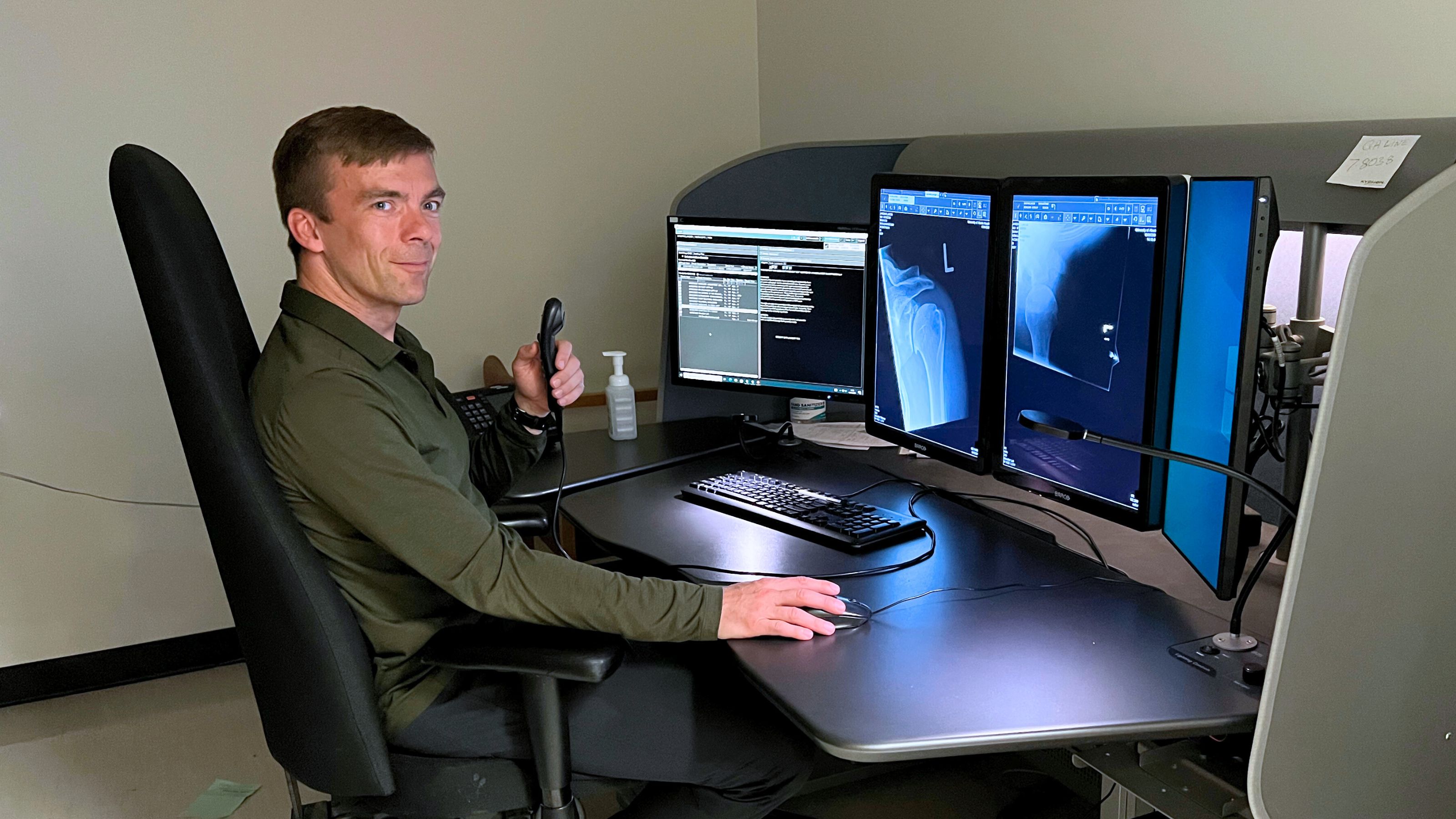Throughout June 2023 we are showcasing interdisciplinary artificial intelligence (AI) research at the U of A that demonstrates how the university is leading with purpose to make AI safer, reliable and more just.
Jacob Jaremko is a practicing pediatric and musculoskeletal radiologist, professor in the Department of Radiology and Diagnostic Imaging at the U of A and a fellow and Canada CIFAR AI Chair at the Alberta Machine Intelligence Institute (Amii).
In this week’s spotlight, Jacob explains how, with the help of human experts, AI can learn to make diagnoses using medical images thereby automating and standardizing the screening process.
What is AI?
Artificial intelligence is an umbrella term, but it is commonly understood as a computer tool called a neural network that tries to mimic how human brain neurons work together.
Human neurons are made of a cell body and little axons that connect to other neurons. A neural network is a set of nodes and links joined together and each node is like a little cell body that adds up the input coming in. If the input is high enough, the node sends a signal onward. Each little bit of the neural network is really simple but when you have many, many links and nodes, you can do complicated, complex stuff like a human brain does. Artificial intelligence is a computer network that mimics the human brain.
Briefly explain your field of research and how it involves AI.
I'm a radiologist, so my job as a doctor is to look at medical images — ultrasound, X-ray, CT scan, MRI — and make diagnoses; there's a tumor, or this is not shaped right or there's an infection. My research has been focused on how we can automate and standardize this task, so that a computer can help radiologists and human experts look at the pictures and, in some cases, replace the initial screening part of what a human does. My task is to use artificial intelligence to look at pictures of anatomy and get it as far as it can in making an opinion as to whether it's normal or abnormal, and why it's abnormal.
How is AI affecting our lives and what is a common misconception people have?
AI is affecting our lives in more ways than we think because it's built into many of the tools we use everyday. AI powers our smartphones and the algorithms that are running Instagram — it's kind of in the background all over the place. But there's a bit of a misconception that it is magic. When I'm having meetings about our work, I often tell people that AI is not actually magic — if you can't see it as a human expert, it's unlikely the AI will successfully see it. However, if a human expert can see it fairly consistently, then you can probably train AI to be almost as good as the human expert.
What is the long term future of AI? And how is the U of A leading in this space?
AI is being used more and more throughout all the different tasks computers are used for right now and integrating more and more with our lives. The U of A is a world leader in artificial intelligence, and actually a world leader in a type of AI called reinforcement learning.
Reinforcement learning is interesting because it's a bit more complex than the deep learning that is being used for a lot of the current applications. It can take an intelligent agent that can do a complex series of multi step tasks and seek a distant reward. It's sort of the smartest kind of AI and the U of A is the world leader in this particular type of learning. And so we're good at all the other parts. But that's actually the biggest thing at U of A and Amii. So I'm proud of those links. And our team is looking at how we can use reinforcement learning to examine medical images.
What do people entering the workforce need to know about AI?
This is very topical because I have three kids aged 8 to 14 and I wonder how I should advise them. Should I advise them to go into radiology, a field where perhaps someday the computers are going to be reading the images and making the diagnoses? I think the new generation has to add value in a way that the AI can't. If you’re in a profession where you're working with the physical world, if you're doing construction, AI is not replacing it but it might make the construction go more smoothly or more efficiently. But if you’re in a profession that has to do with words or pictures, you have to be learning to be creative and innovative and making new connections and doing something beyond just churning data, because computers are really good at churning data. I think it’s important for people to think about how they can provide something more useful than a computer can.
This conversation has been edited for brevity and clarity.
Jacob is one of 26 faculty members and Amii fellows who are Canada CIFAR AI Chairs.
Through a new investment, the U of A and Amii will soon welcome 20 faculty members whose work reflects the technology’s transformational impact in health, energy, Indigenous leadership and more. Learn about how these new researchers will help shape the evolving landscape of AI.

About Jacob
Jacob Jaremko is a Professor of Radiology and Adjunct Professor of Computing Science at the University of Alberta, a practicing board-certified Pediatric and Musculoskeletal radiologist and partner at Medical Imaging Consultants and co-founder of two startup companies including MEDO.ai. He has a PhD in Biomedical Engineering. He is a Canada CIFAR AI Chair and Fellow of the Alberta Machine Intelligence Institute. His research has focused on developing objective imaging biomarkers of disease in ultrasound and MRI and on implementing AI-augmented medical imaging diagnostic tools at the clinical point of care — building the 21st-century stethoscope.
Innovator Spotlight is a series that introduces you to a faculty or staff member whose discoveries, knowledge and ideas are driving innovation.
Do you know someone at the U of A who is transforming ideas into remarkable realities? Maybe it’s you! We are interested in hearing from people who are helping shape the future, improving quality of life, driving economic growth and diversification and serving the public. We feature people working across all disciplines, whether they are accelerating solutions in energy, shaping the evolving landscape of artificial intelligence or forging new paths in health and Indigenous leadership.
Get in touch at blog@ualberta.ca.
